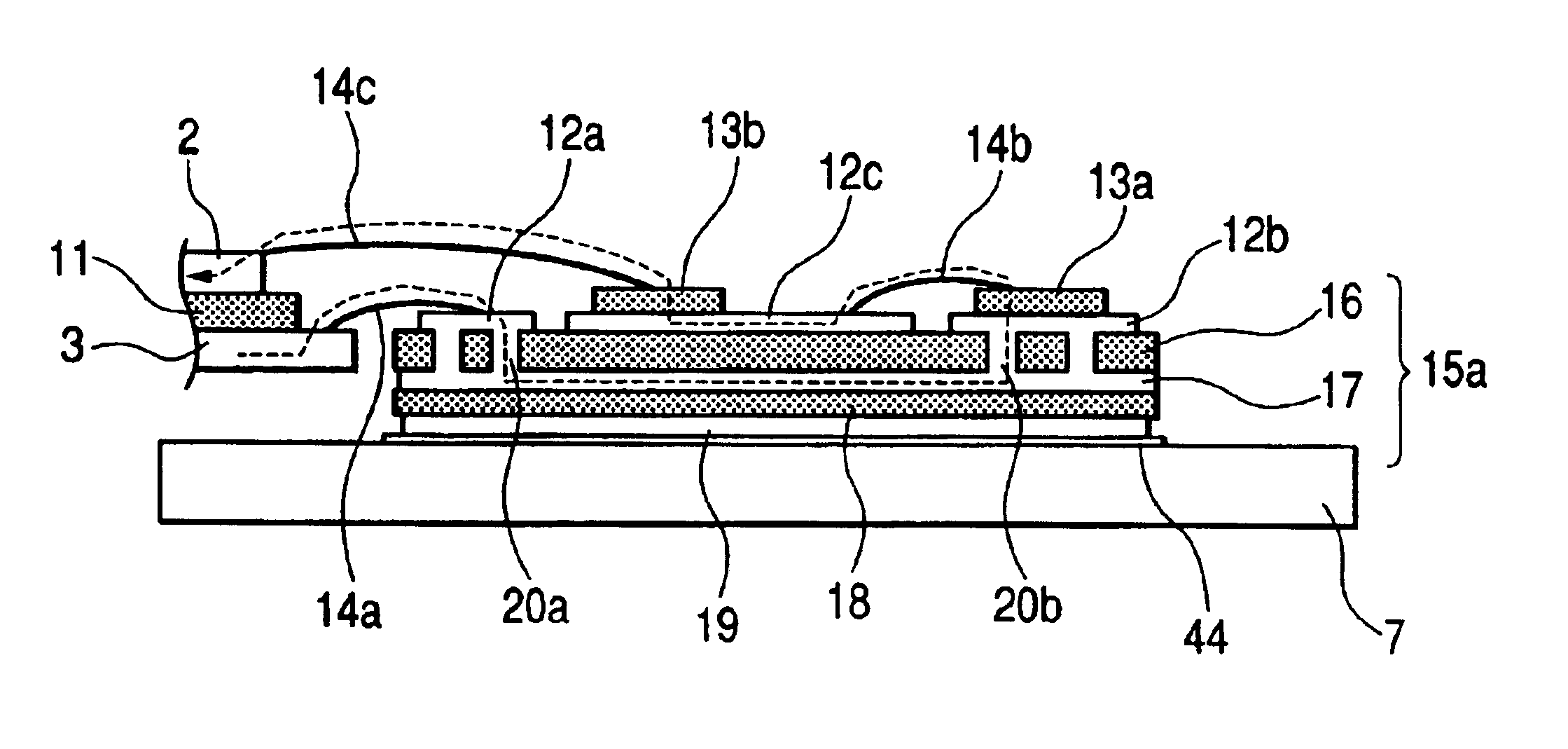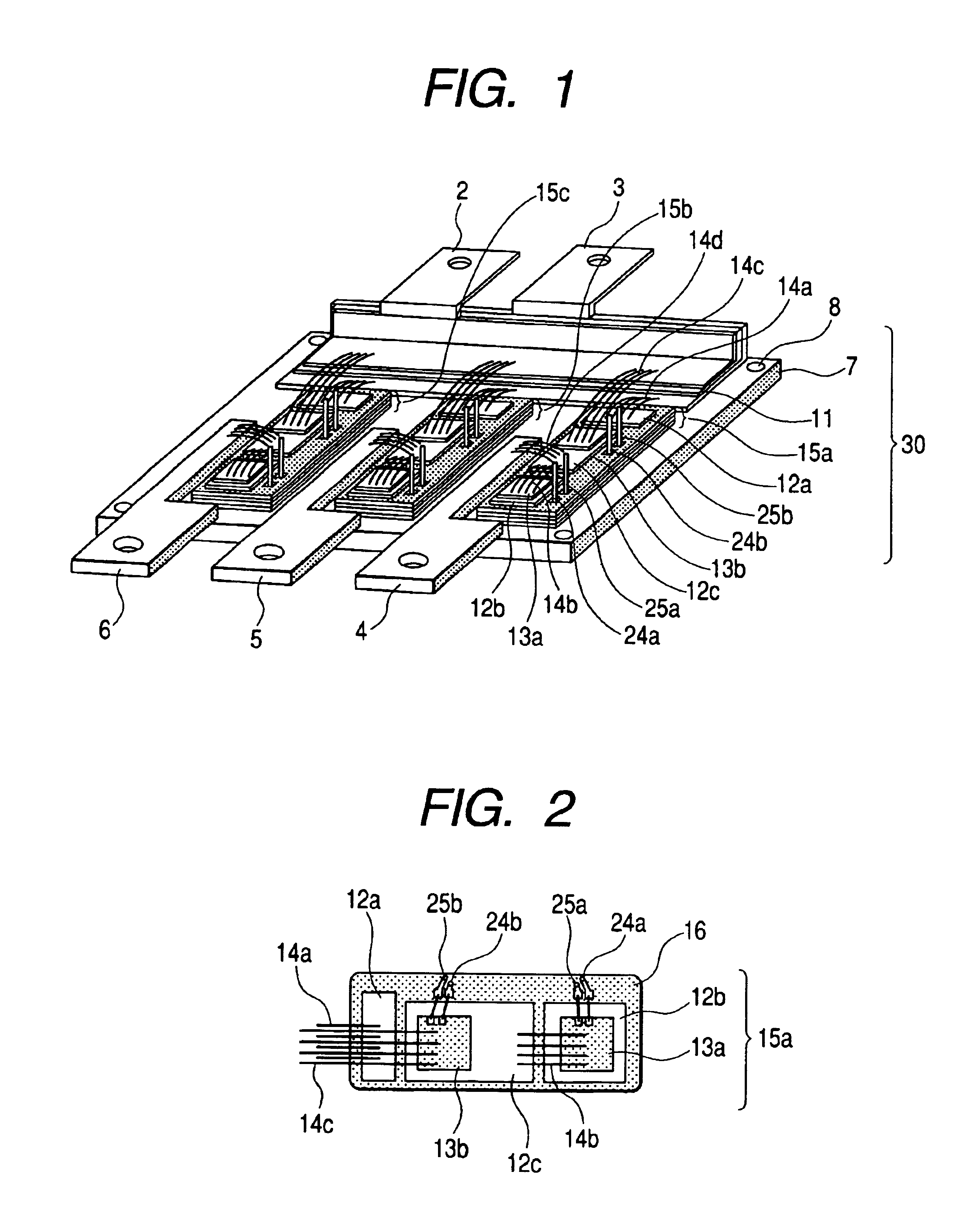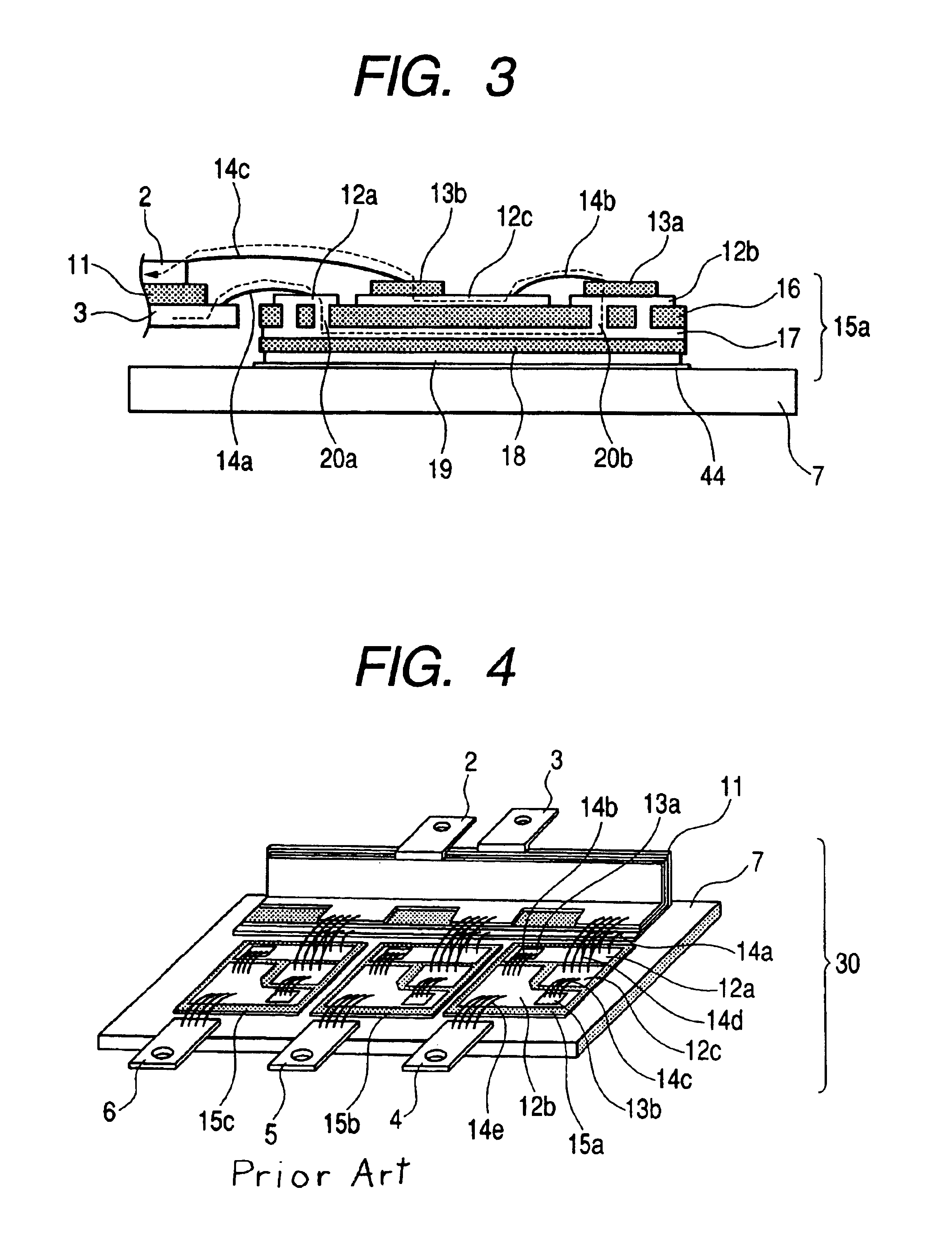Semiconductor device having bridge-connected wiring structure
a technology of semiconductor devices and wiring structures, applied in semiconductor devices, solid-state devices, basic electric elements, etc., can solve the problems of increasing loss at semiconductor switches, affecting the operation of semiconductor switches, so as to reduce heat generation, reduce the voltage applied, and reduce the withstand voltage
- Summary
- Abstract
- Description
- Claims
- Application Information
AI Technical Summary
Benefits of technology
Problems solved by technology
Method used
Image
Examples
first embodiment
[0040]FIG. 1 is a general view showing a wiring structure of a semiconductor device according to the present invention. In FIG. 1, a semiconductor device 30 is shown. Reference numeral 2 designates a negative polarity DC terminal, 3 designates a positive polarity DC terminal, 4, 5 and 6 designate output terminals and a wiring board, 7 designates a radiating plate, 8 designate threaded holes, and 11 designates an insulating board. In addition, reference numerals 12a, 12b and 12c designate substrate conductor patterns, 13a and 13b designate diode and semiconductor switches, 14a, 14b, 14c and 14d designate wire interconnections, 15a, 15b and 15c designate insulating boards or substrates, 24a and 24b designate gate signal terminals, and 25a and 25b designate ground terminals. The respective terminals 2, 3, 4, 5 and 6 are provided with wiring mounting holes. The threaded holes 8 are used when a cooling fin and the radiating plate 7 are fixed with bolts or the like.
[0041]Although the wire...
second embodiment
[0063]A description will next be made of a wiring layout for increasing the longevity of solder joining between semiconductor switches and substrate conductor patterns employed in a semiconductor device according to the present invention, with reference to FIGS. 8 and 9. FIG. 8 is a perspective view showing a wiring structure of the semiconductor device according to the present embodiment, with a case portion of the semiconductor device omitted in drawing.
[0064]In FIG. 8, reference numeral 30 designates the semiconductor device, reference numeral 2 designates a negative polarity DC terminal, 3 designates a positive polarity DC terminal, 4, 5 and 6 designate output terminals and a wiring board, 7 designates a radiating plate, reference numerals 8 designate threaded holes, 11 designates an insulating board, 12a, 12b, 12c and 12d designate substrate conductor patterns, 13a and 13b designate diode and semiconductor switches, 14a, 14b, 14c, 14d and 14e designate wire interconnections, 15...
third embodiment
[0077]A semiconductor device according to the present invention, wherein semiconductor switches are arranged in parallel, will next be explained with reference to FIGS. 10 and 11. FIG. 10 is a plan view of the semiconductor device employed in the present embodiment with the semiconductor switches arranged in a two parallel form. In FIG. 10, the upper surface portion of a case of the semiconductor device has been omitted from FIG. 10 to show an internal wiring structure.
[0078]In FIG. 10, reference numeral 30 designates a semiconductor device, reference numeral 2 designates a negative polarity DC terminal, 3 designates a positive polarity DC terminal, 4, 5 and 6 designate output terminals and a wiring board, 13a, 13b, 13c and 13d designate diode and semiconductor switches, 14b and 14e designate wire interconnections, 15a, 15b and 15c designate insulating substrates, 24a and 24b designate gate signal terminals, 25a and 25b designate ground terminals, 27a and 27b designate drain signal ...
PUM
 Login to View More
Login to View More Abstract
Description
Claims
Application Information
 Login to View More
Login to View More - R&D
- Intellectual Property
- Life Sciences
- Materials
- Tech Scout
- Unparalleled Data Quality
- Higher Quality Content
- 60% Fewer Hallucinations
Browse by: Latest US Patents, China's latest patents, Technical Efficacy Thesaurus, Application Domain, Technology Topic, Popular Technical Reports.
© 2025 PatSnap. All rights reserved.Legal|Privacy policy|Modern Slavery Act Transparency Statement|Sitemap|About US| Contact US: help@patsnap.com



